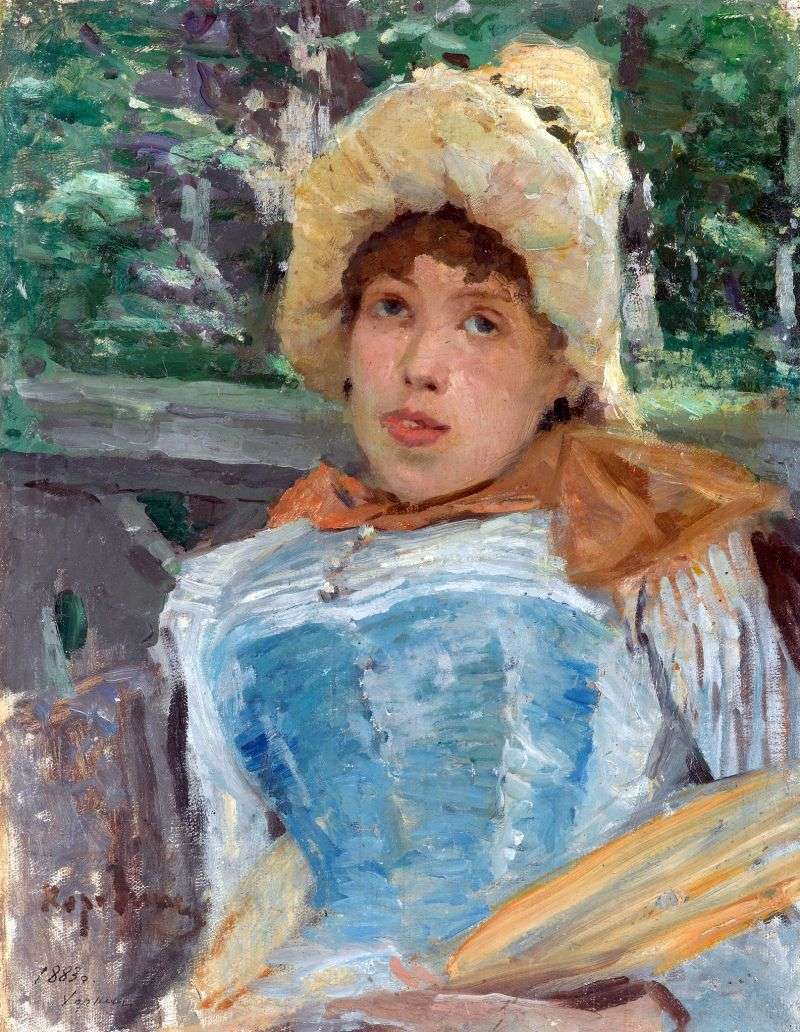
It was Polenov who did much to shape the future artist. On the slope of the summer Korovin recalled: “Polenov was so interested in school and brought a fresh stream into it, as in the spring they open a window of a stuffy room.” He first began talking about pure painting, as it was written, talking about the variety of colors. “
The influence of the new teacher and the series of sketches brought by him from the East in 1881-1882 is undoubtedly noticeable in the “Portrait of the Chorus Girl”, unexpected for the Moscow School and Russian painting of those years, with its clear harmony of pure colors. The young artist brilliantly solved the problem of depicting a human figure in a living and changeable light-and-air environment. His own, perhaps, a random model – an ugly young woman in a slightly ridiculous hat, with a fan in his hand – he captured on a terrace, against a sun-drenched public garden.
The picture seemed so unexpectedly new in execution and incomprehensible on the tasks that Polenov, judging by the author’s inscription on the back of the canvas, even advised the pupil not to exhibit it. It is interesting that at the same time in the studio of the same teacher Levitan’s landscapes “The First Green, May”, “The Bridge Savvinskaya Sloboda” appeared, as well as the “Portrait of the Chorus Girl”, which are early examples of impressionism in Russian painting. Strangely, the Korovin chorister turned out to be akin to the female portraits of Auguste Renoir.
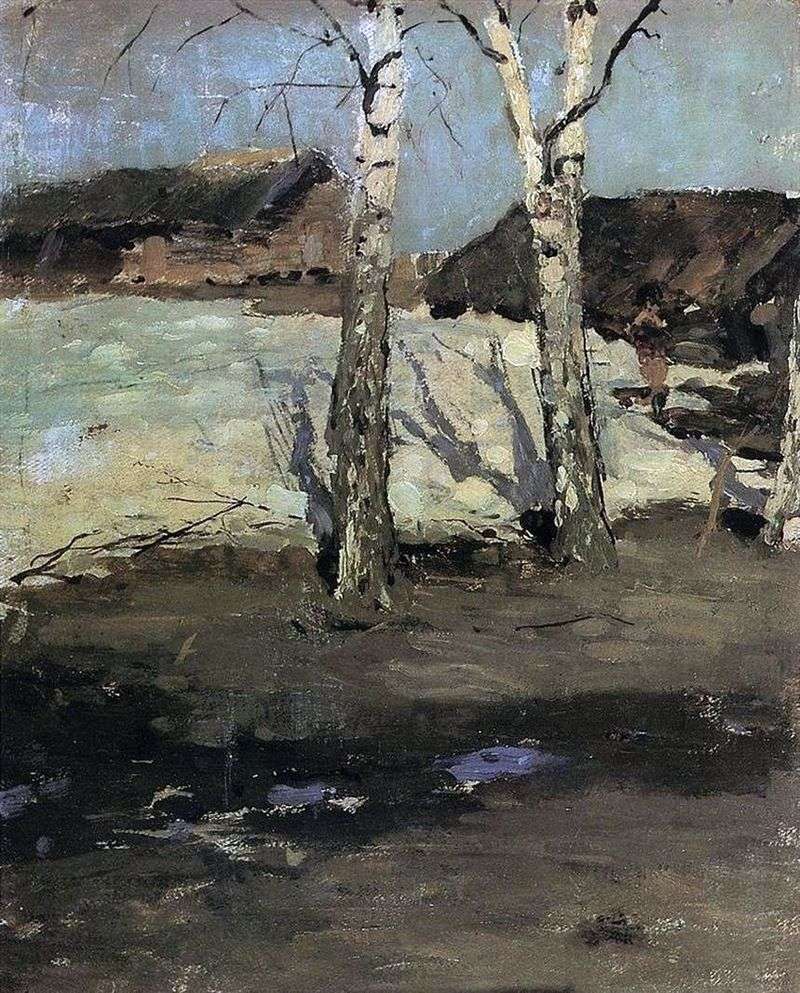 The Last Snow by Konstantin Korovin
The Last Snow by Konstantin Korovin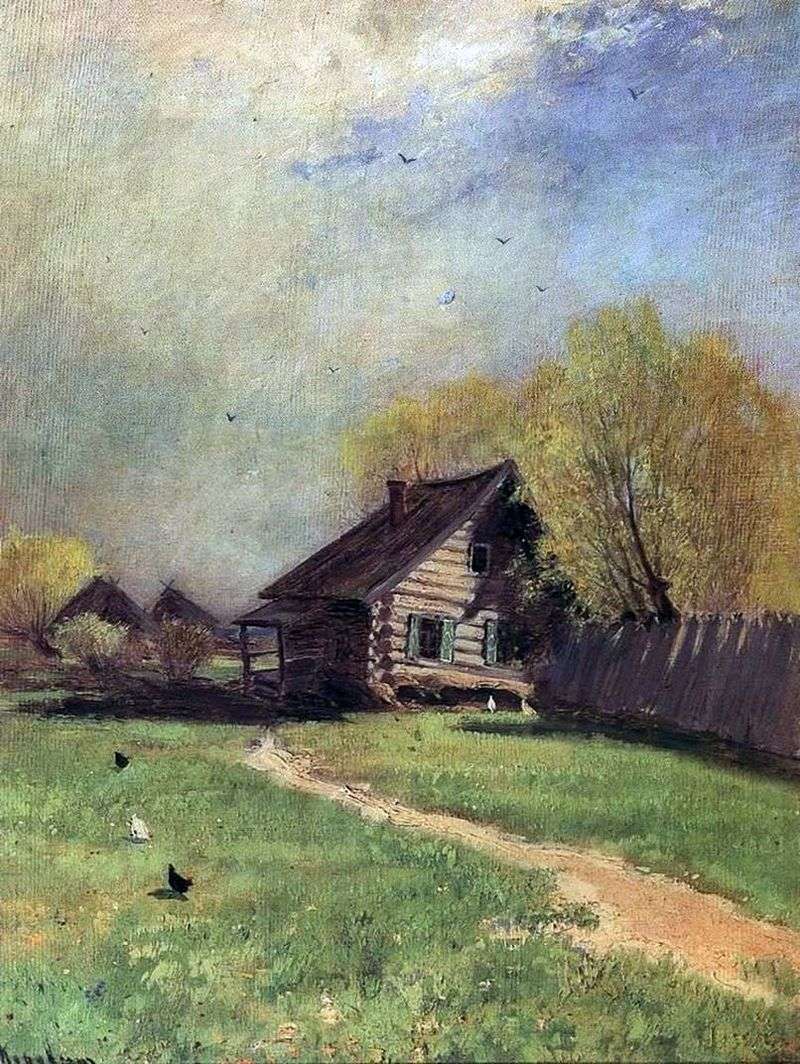 Early Spring by Konstantin Korovin
Early Spring by Konstantin Korovin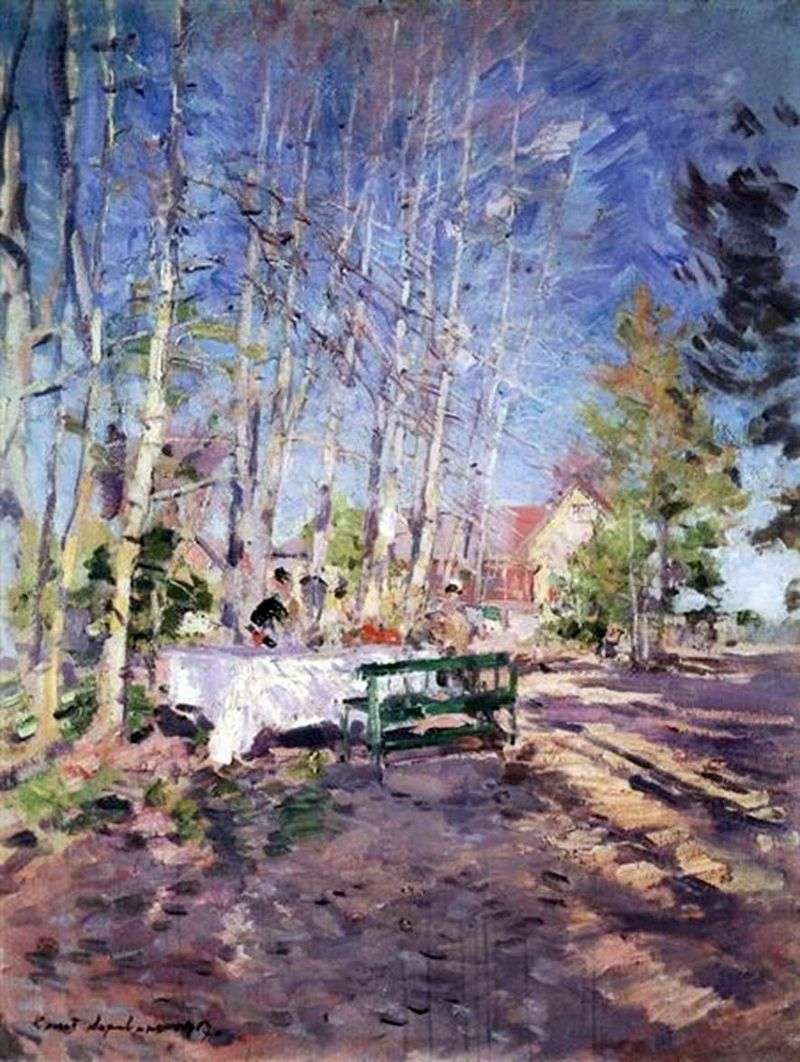 Spring by Konstantin Korovin
Spring by Konstantin Korovin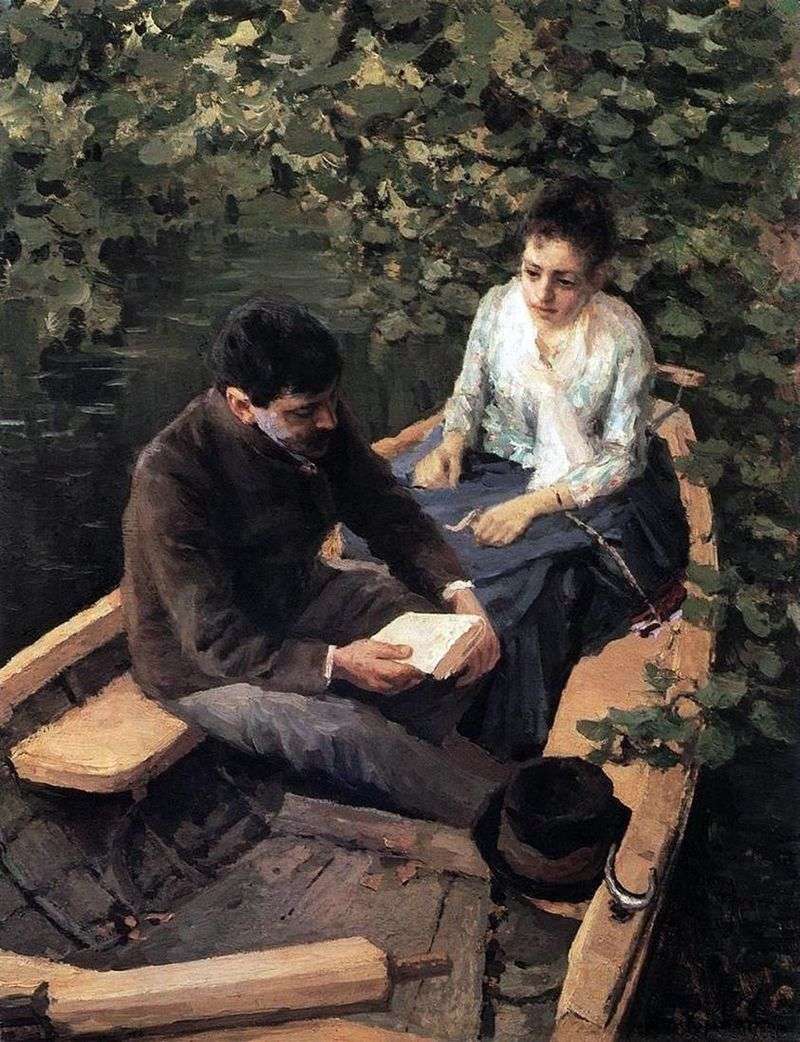 In the boat by Konstantin Korovin
In the boat by Konstantin Korovin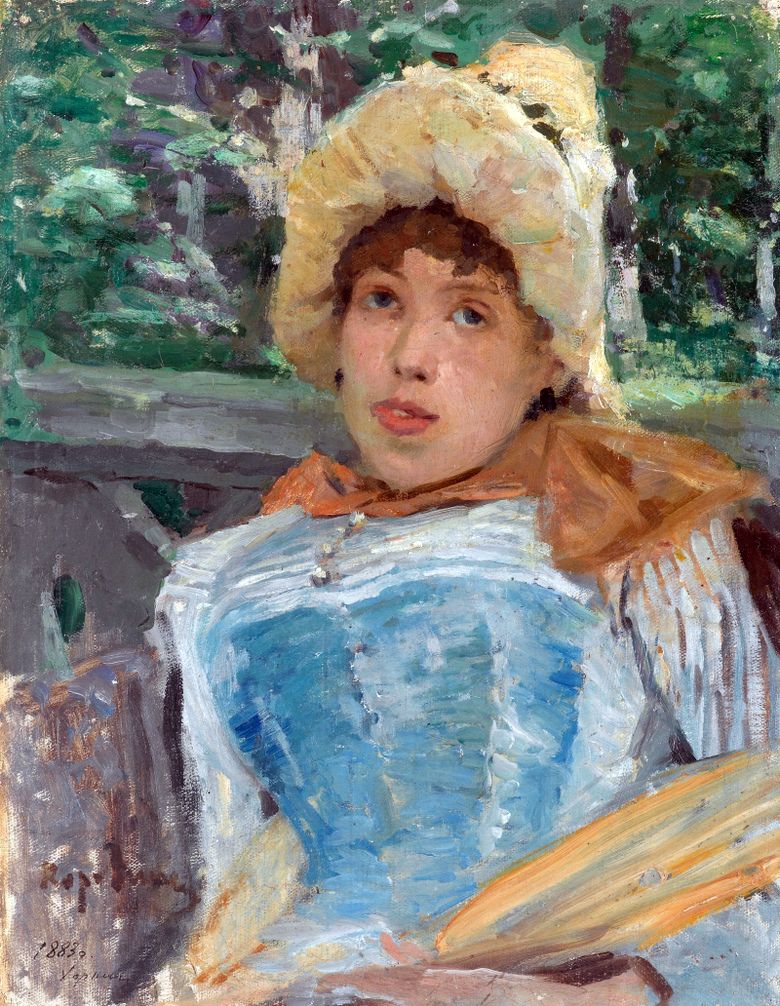 Portrait d’une chorale – Konstantin Korovin
Portrait d’une chorale – Konstantin Korovin Paper Lanterns by Konstantin Korovin
Paper Lanterns by Konstantin Korovin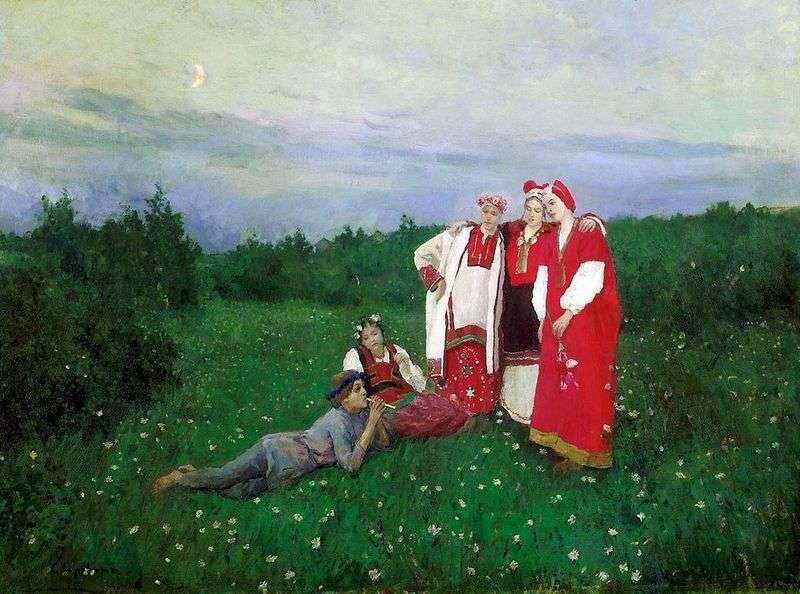 The Northern Idyll by Konstantin Korovin
The Northern Idyll by Konstantin Korovin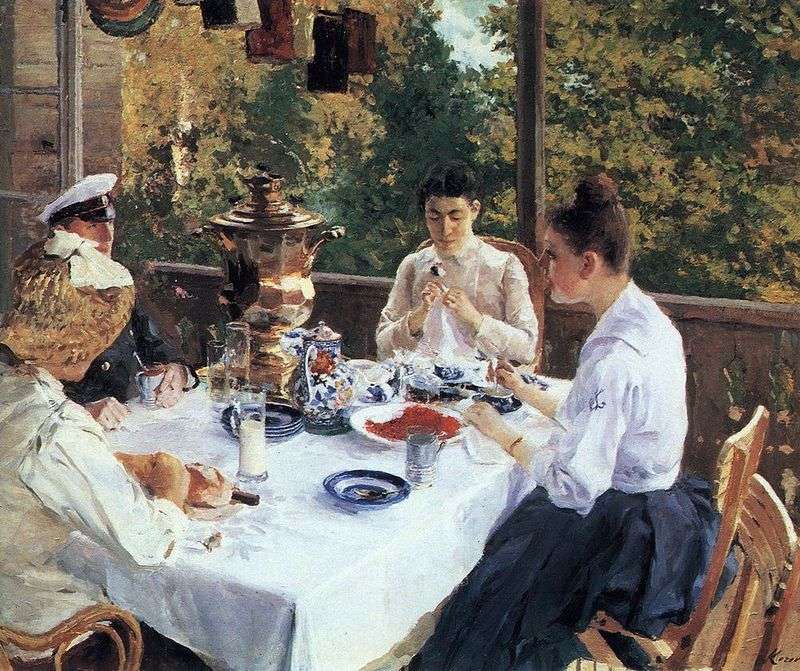 At the tea table by Konstantin Korovin
At the tea table by Konstantin Korovin